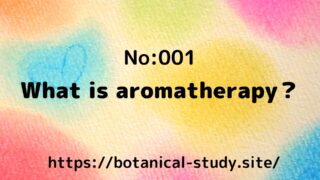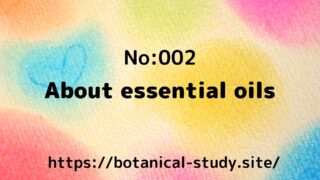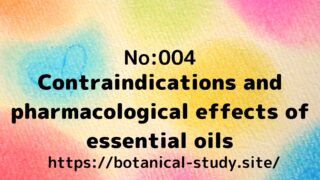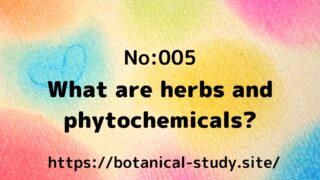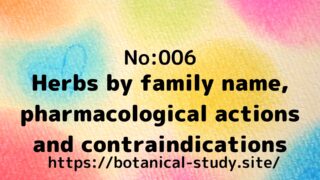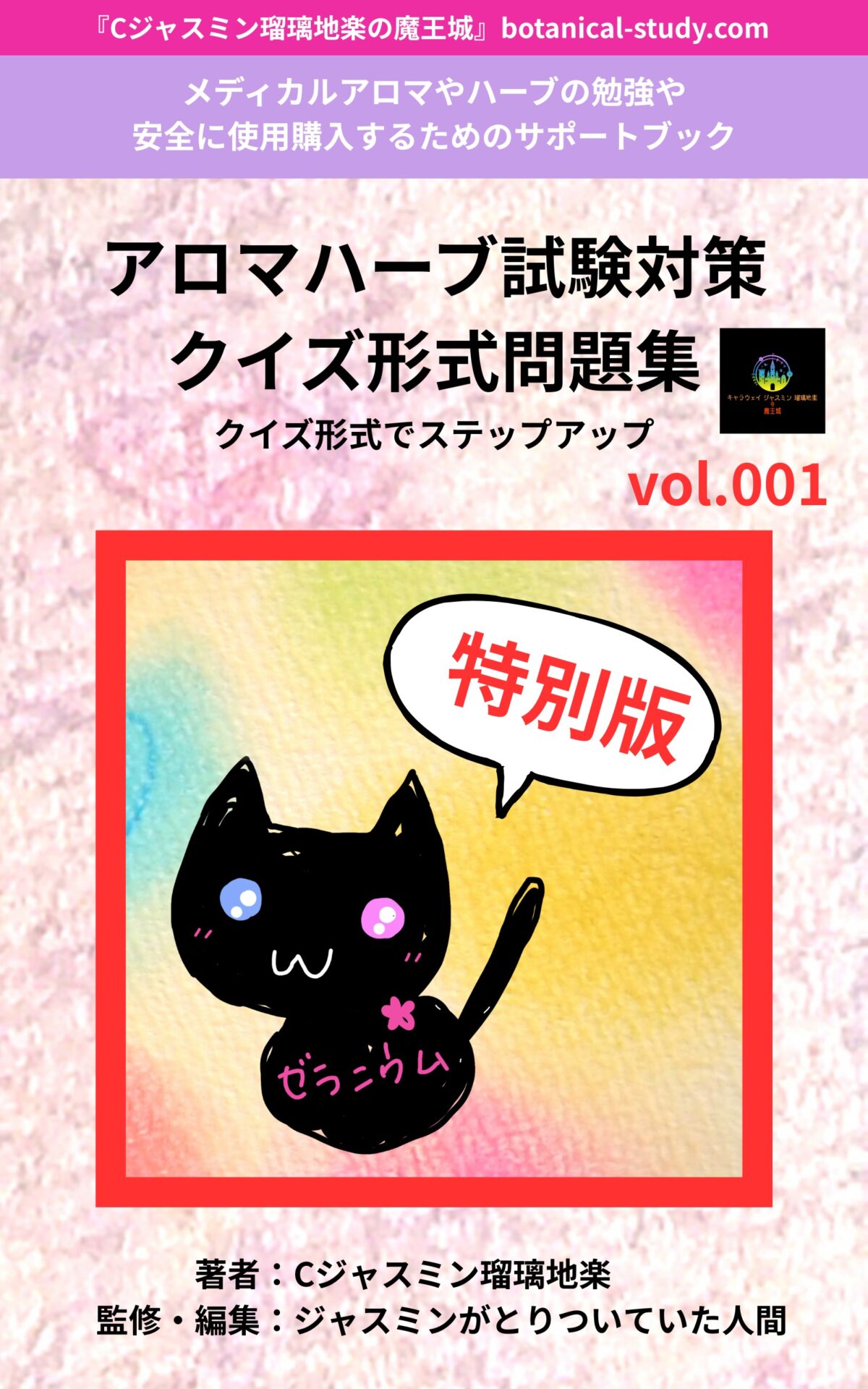3:Comprehensive List of All Essential Oils by Family Name, Chemotype Essential Oils, and Main Base Materials


- Caution with undiluted essential oils! Always dilute essential oils before use
- The base materials used vary depending on how you enjoy aromatherapy.
- Essential Oils List by Family Name
- [Chanoweed family]
- [Poaceae]
- [Anacardiaceae]
- [Styrax family]
- [Ominaeidae]
- [Canella]
- [Versiaceae]
- [Asteraceae]
- [Camphor family]
- [Verbenaceae]
- [Pepper family]
- [Lamiaceae]
- [Shikimidae]
- [Lilyaceae]
- [Ginger family]
- [Apiaceae]
- [Rhododendron]
- [Nectaraceae]
- [Cantaceae]
- [Rosaceae]
- [Annuaceae]
- [Cypress family]
- [Sandalwood family]
- [Geranium family]
- [Myrtaceae]
- [Ptaeroccillaceae]
- [Pine family]
- [Legumiaceae]
- [Rutaceae]
- [Oleaceae]
- [Orchidaceae]
- About ‘chemotype essential oils’ which require careful attention when purchasing
- List of Main Carrier Oils
Caution with undiluted essential oils! Always dilute essential oils before use
Essential oils are highly concentrated, even in a single drop, and can be very irritating to the skin; therefore, undiluted application is strictly prohibited.
When performing aromatherapy treatments, essential oils need to be diluted with a carrier oil.
The material used for dilution is called a ‘base material’.
💜How to choose the right essential oil→【2】
The base materials used vary depending on how you enjoy aromatherapy.
- Base materials for aromatherapy differ depending on the method of enjoyment:
- Aromatic bath (using a diffuser) – Tap water
- Room aroma mist – Distilled water, anhydrous ethanol
- Aroma mask spray – Aromatic distilled water, distilled water, anhydrous ethanol
- Treatment oil – Carrier oil
- Homemade lotion – Aromatic distilled water, anhydrous ethanol, glycerin, etc.
- Homemade cream – Aromatic distilled water, carrier oil, shea butter, etc.
- Homemade lip balm – Beeswax, carrier oil
- Bathing or partial bathing – Bath oil, natural salt

Except for aromatic baths involving dripping essential oils onto tissue, always dilute essential oils with base materials.
Use homemade treatment oils and cosmetics promptly.
💜Learning the chemistry and action of aroma essential oils makes choosing essential oils fun.→【7】
Essential Oils List by Family Name
It’s important to remember the ‘family name’ of plants to identify high-quality essential oils.
This topic is also commonly tested in certification exams.
[Chanoweed family]
“Wormsed”
[Poaceae]
“Winter Lemongrass” “Citronella” “Citronella Java”
“Palmarosa” “Lemongrass”
[Anacardiaceae]
“Mastic Tree”
[Styrax family]
“benzoin”
[Ominaeidae]
“Spikenard” “Valerian”
[Canella]
“Cinnamothma Fragrance”
[Versiaceae]
“Elemi” “Frankincense” “Myrrh”
[Asteraceae]
“Inura” “Chamomile German” “Chamomile Roman” “Tanacetam”
“Tarragon” “Helichrysum” “Magwort” “Yarrow”
[Camphor family]
“Kuromoji” “Cinnamon cassia” “Cinnamon (bark)” “Cinnamon (leaf)”
“Howood” “Ravintsara” “Lithcea”
“Rosewood” “Laurel”
[Verbenaceae]
“Lantana” “Lemon Verbena”
[Pepper family]
“pepper”
[Lamiaceae]
“Arvensis Mint” “Winter Sevory” “Oregano”
“Calamint” “Clary Sage” “Spanish Sage” “Sage”
“Thyme Geraniol” “Thyme Satureoides” “Thyme Timor”
“Time Tsuyanol” “Time Parasimen” “Time Mastkina”
“Thyme linalool” “Basil” “Patchouli” “Hyssop”
“Hyssop” “Vetiver” “Bergamot Mint” “Peppermint”
“Holy Basil” “Marjoram” “Marjoram Winter”
“Lavender abrialis” “Lavender angustifolia”
“Lavender Grosso” “Lavender Super” “Lavender Stoekas”
“Lavender Spica” “Lavender Raid Van” “Lemon Balm”
“Rosemary Camphor” “Rosemary Cineole”
“Rosemary Pyramidaris” “Rosemary Verbenone”
[Shikimidae]
“Star Anise”
[Lilyaceae]
“Linden Blossom”
[Ginger family]
“Ginger” “Turmeric”
[Apiaceae]
“Ajowan” “Anis” “Opoponax” “Callaway” “Quella”
“Cumin” “Coriander” “Celery” “Dill” “Parsley”
“Fennel” “Rovege” “Wild Carrot”
[Rhododendron]
“Wintergreen” “Labradordi”
[Nectaraceae]
“nutmeg”
[Cantaceae]
“Rock Rose”
[Rosaceae]
“Almond Bitter” “Rose”
[Annuaceae]
“Iran Iran”
[Cypress family]
“Cypress” “Cedar” “Juniper” “Juniper Montana” “Hiba”
[Sandalwood family]
“Sandalwood”
[Geranium family]
“Geranium Egypt” “Geranium Corsica” “Geranium China”
“Geranium Bourbon”
[Myrtaceae]
“Cajepute” “Clove” “Tea Tree” “Niaouli Cineole”
“Niaouli Nerolidol” “Myrtle Cineole”
“Eucalyptus Viminalis” “Eucalyptus Globulus” “Eucalyptus Smitty”
“Eucalyptus Dibes” “Eucalyptus polyplastia cineole”
“Eucalyptus polyplastia krypton” “Eucalyptus radiata”
“Eucalyptus Lemon”
[Ptaeroccillaceae]
“Catafray”
[Pine family]
“Red Pine Europe” “Atlas Cedar” “Angelica (Seed)”
“Angelica (Root)” “Pine” “Balsam Fir” “Cedar”
“Black Spruce” “Pontelosa Pine”
[Legumiaceae]
Copaiba, True Balsam, Tonka Beans
[Rutaceae]
“Orange Sweet” “Orange Bitter” “Grapefruit” “Neroli”
“Petitgrain (leaf)” “Bergamot” “Mandarin” “Yuzu” “Lime”
“lemon”
[Oleaceae]
“Osmanthus” “Jasmine (absolute)”
[Orchidaceae]
“vanilla”

Instructors and therapists have a lot to remember, and during exam preparation, ‘family names’ and ‘scientific names’ tend to be postponed.
About ‘chemotype essential oils’ which require careful attention when purchasing
The following essential oils are all derived from the ‘Geraniaceae’ family and are extracted from the ‘leaves.’
However, due to differences in their place of origin (environment), their fragrance and the effects on the mind and body vary, making them chemotype essential oils.
- “Geranium Egypt” – Beneficial for both mind and body in various ways.
- “Geranium Corsica” – Particularly supportive for skin health.
- “Geranium China” – Especially useful for general wellness.
- “Geranium Bourbon” – Supports digestive health.

Being knowledgeable about chemotype essential oils indicates a strong understanding of aromatherapy!
The following essential oils are all extracted from the ‘Lamiaceae’ family, specifically from the ‘flower spikes’ of lavender.
However, due to various factors, the aromatic constituents contained differ, resulting in distinct fragrances and expected benefits for the mind and body, making them chemotype essential oils.
- “Lavender angustifolia” – Monoterpene alcohols and esters
- “Lavender super” – Monoterpene alcohols, esters, and ketones
- “Lavender stoechas” – Characterized by a high content of ketones
- “Lavender spica” – Characterized by a high content of oxides
- “Lavender latifolia” – Contains more monoterpene alcohols than esters

Regardless of chemotype, essential oils have potential ‘contraindications’ that can be dangerous and frightening.
Be cautious when purchasing essential oils.
List of Main Carrier Oils
“Argan oil” “Evening primrose oil” “Olive oil” “Grapeseed oil”
“Sweet almond oil” “Pharmus oil” “Vegetable squalane” “Jojoba oil”

It’s recommended to use it up within 3 to 6 months after opening!

